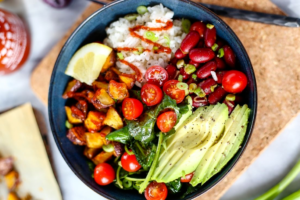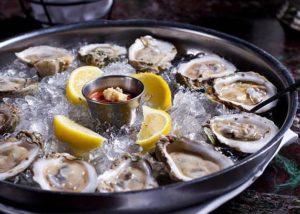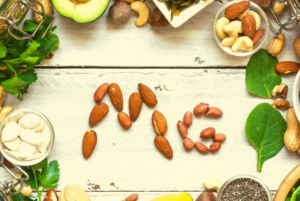- Home
- /
- Healthy Meal
- /
- Recipes of Healthy Food
- /
- Soups
- /
- Borscht Recipes Variations
- /
- Borscht Recipes Variations: Journey...
- 1. Unique Recipe: Borscht with a Mediterranean Twist
- 2. The Roots of Borscht: The Origins and Symbolism of a Beloved Soup
- 3. The Diverse and Delightful Faces of Eastern Europe’s Beloved Soup
- 4. Symbolism and Tradition: Uncovering the Deeper Significance and Timeless Traditions of an Iconic Dish
- 5. The Common Thread: Exploring the Shared Ingredients and Stories that Bind Eastern Europe Together
- 6. Health Benefits and Nutritional Value, Unveiling the Culinary Medicine and Wellness Woven into Eastern Europe’s Beloved Soup
- 7. Exploring Creative Twists and Contemporary Adaptations that Revitalize Eastern Europe’s Classic Soup, Borscht Reimagined: Modern Interpretations of an Ancient Delight
In the world of gastronomy, certain dishes transcend the confines of a mere meal, evolving into a culinary odyssey, a cultural symphony that resonates through the ages. Among these, borscht recipes stand as an enduring masterpiece. This article is a voyage through the vibrant and diverse world of borscht—a soup that beckons us to explore the rich tapestry of Eastern European culinary heritage and the ever-evolving flavors that grace our plates.
Borscht, a hearty and vibrant soup, is more than just a culinary delight; it’s a cultural kaleidoscope that has graced tables across Eastern Europe for centuries. This beloved dish transcends geographical borders and unites diverse cultures through its rich history, versatile ingredients, and symbolic significance. Join us on a journey to explore the many facets of borscht, a soup that brings together the flavors, stories, and traditions of the Eastern European culinary landscape.
Borscht is more than just a bowl of soup. It is a journey through time and traditions, a vessel carrying the stories of countless kitchens, and a bridge that connects cultures through its vibrant hues and nourishing warmth. As we embark on this gastronomic adventure, we’ll uncover the multifaceted facets of borscht: from its humble beginnings in the fields of Ukraine to its modern interpretations that defy culinary boundaries.
This article is an exploration of the roots, variations, symbolism, health benefits, modern interpretations, and, most importantly, the shared thread that unites diverse cultures in their love for this iconic dish. Join us as we embark on a sensory voyage through the lands of beets, the symphonies of flavors, and the heartfelt traditions that make borscht not just a meal but a cultural treasure, a feast for the soul.
1. Unique Recipe: Borscht with a Mediterranean Twist
1.1. Ingredients
– 2 large beets, peeled and grated
– 2 large tomatoes, diced
– 1 red onion, finely chopped
– 3 cloves garlic, minced
– carrots diced, 1 cup carrots
– celery diced, 1 cup celery
– 1 zucchini, diced
– 4 cups vegetable broth
– 1 cup cannellini beans, cooked and drained
– 1 tablespoon olive oil
– 2 tablespoons red wine vinegar
– 1 teaspoon dried oregano
– 1 teaspoon dried thyme
– Salt and pepper to taste
– Fresh parsley for garnish
– Greek yogurt for serving (optional)
1.2. Instructions
A. Mediterranean Flavor Base
Start by creating a Mediterranean twist to your borscht. In a large pot, heat the olive oil over medium heat. Add the chopped red onion and minced garlic. Sauté until fragrant and the onions become translucent, about 3-4 minutes.
B. Saute the Aromatics
Add the diced carrots, celery, and zucchini to the pot. Sauté for another 5-7 minutes, until the vegetables start to soften.
C. Tomato Goodness
Stir in the diced tomatoes and let them cook down for about 5 minutes, releasing their juices. This will add a rich, tomatoey base to your borscht.
D. Beets and Broth
Add the grated beets to the pot and pour in the vegetable broth. Stir well to combine. Bring the mixture to a gentle boil, then reduce the heat and let it simmer for about 20-25 minutes, or until the beets are tender.
E. Mediterranean Flair
Add the red wine vinegar, dried oregano, and dried thyme. Season with salt and pepper to taste. These Mediterranean herbs and spices will give your borscht a unique, Mediterranean flavor profile.
F. Creamy Cannellini Beans
Gently fold in the cooked cannellini beans. These beans will provide a creamy texture and a hearty element to your borscht.
G. Simmer and Serve
Allow your Mediterranean-inspired borscht to simmer for an additional 10-15 minutes, ensuring that all flavors meld together beautifully. Taste and adjust the seasonings if necessary.
H. Garnish and Enjoy
When serving, garnish each bowl with fresh parsley and, if you like, a dollop of Greek yogurt for a Mediterranean touch. This borscht is best enjoyed hot, but it’s also delightful when served chilled.
I. Share the Experience
Borscht is not just a dish; it’s a story. Share this unique Mediterranean-inspired borscht with friends and family, and let them savor the flavors of the Eastern European and Mediterranean fusion.
This unique Mediterranean borscht brings a fresh twist to a classic Eastern European dish. The blend of beets, tomatoes, and Mediterranean herbs offers a unique flavor profile that celebrates the diversity of culinary traditions. Whether enjoyed hot or chilled, this borscht is a delicious journey through cultures and flavors.
2. The Roots of Borscht: The Origins and Symbolism of a Beloved Soup
In the realm of culinary treasures, few dishes are as deeply rooted in history and culture as borscht. A humble soup that transcends geographical boundaries and time itself, borscht has a story as rich as its vibrant hues. In this chapter, we delve into the very heart and soul of borscht, exploring its origins, evolution, and the profound symbolism it carries within its velvety depths.
2.1. The Soil Where It All Began
The story of borscht takes us back to a time when Eastern Europe’s vast and fertile lands teemed with hardworking peasants who toiled the soil. It was within these ancient landscapes, particularly in Ukraine, that the first chapter of borscht’s tale unfolds. Born out of necessity and nourishment, borscht was a culinary invention that celebrated the bountiful produce of the region.
2.2. Beets: The Ruby Heart of Borscht
At the core of borscht’s identity lies the beet, a humble root vegetable that would go on to become a symbol of prosperity, hospitality, and resilience. The vivid crimson of beets seeped into the cultural fabric, reflecting the enduring spirit of the people who cultivated them.
2.3. From Peasant Fare to Culinary Icon
Borscht, once a humble peasant dish, quickly found its way into the hearts and homes of Eastern Europeans. As ingredients were added, regional variations emerged, weaving the soup further into the fabric of individual cultures.
2.4. A Symbol of Hospitality and Celebration
Beyond its delicious flavor, borscht became a symbol of hospitality. Preparing a pot of borscht for guests was an act of welcoming warmth, an invitation to share in the nourishing tradition that lay at the heart of Eastern European culture. The significance of borscht extends to celebrations and blessings, with its vivid red color seen as a harbinger of good fortune.
3. The Diverse and Delightful Faces of Eastern Europe’s Beloved Soup
In the world of culinary artistry, few dishes boast the kaleidoscopic diversity of borscht. A soup that stands as a symbol of unity and individuality, borscht is a vivid reflection of the ever-evolving cultures that inhabit the Eastern European landscape. In this chapter, we embark on a culinary odyssey to explore the vibrant and diverse interpretations of borscht, each a unique expression of regional flavors, traditions, and creativity.
3.1. Ukraine: Where it All Began
The heartland of borscht, Ukraine, offers the classic red borscht, made from beets, vegetables, and sometimes meat. This timeless rendition forms the foundation for borscht’s evolution, a nod to the simplicity and brilliance of its roots.
3.2. Poland: Barszcz – A Different Shade of Red
Just across the border, Poland presents Barszcz, a red beet soup without the heartiness of its Ukrainian counterpart. It’s a clear, vibrant broth typically served with uszka (tiny dumplings) and sour cream. Barszcz showcases the elegance of simplicity and the beauty of clarity.
3.3. Lithuania: Šaltibarščiai – The Chilled Palette
In Lithuania, a refreshing twist awaits with Šaltibarščiai, a cold borscht variation. It’s a blend of kefir or buttermilk, beets, and a medley of fresh herbs, cucumbers, and scallions. The tangy, chilled version of borscht is the perfect antidote to a sweltering summer day.
3.4. Russia: Borscht With a Crust of Borodinsky Bread
Russia offers its own take on this iconic soup, sometimes garnished with Borodinsky bread croutons and a dollop of smetana (sour cream). Russian borscht is known for its intense flavor and hearty character, truly reflecting the vast and diverse country it represents.
3.5. Jewish Tradition: Sweet and Sour Delights
In the Jewish tradition, borscht takes on a sweet and sour profile with the addition of sugar and lemon. It’s a delightful blend of Eastern European roots and unique Jewish culinary traditions, highlighting the adaptability of borscht to embrace diverse palates and cultural influences.
3.6. Modern Interpretations: Fusion and Innovation
Borscht, in the hands of modern chefs and creative food enthusiasts, takes on an entirely new dimension. Some infuse it with unconventional ingredients like apples, mushrooms, or even seafood, showcasing the adaptability of borscht to blend with contemporary culinary trends.
3.7. Borscht Beyond Borders
As we explore these colorful variations, we uncover the rich tapestry of Eastern European cuisine and culture. The vibrant and varied interpretations of borscht serve as a testament to the ever-evolving nature of food traditions, where the roots remain steadfast, but the branches reach out in all directions.
In this chapter, we celebrate the myriad colors and flavors that borscht dons across Eastern Europe and beyond. Each bowl tells a story, reflects a history, and represents the creativity and adaptability of the culinary arts. Whether you’re savoring the classic Ukrainian version or indulging in a modern twist, you’ll discover that the colorful variations of borscht form a magnificent and unifying tapestry in the world of food.
4. Symbolism and Tradition: Uncovering the Deeper Significance and Timeless Traditions of an Iconic Dish
Borscht, beyond its delicious and varied incarnations, is an emblem of culture, tradition, and symbolism. This chapter takes you on a profound journey into the heart of Eastern European culinary heritage, where a simple bowl of soup embodies the warmth of hospitality, the weight of history, and the power of a shared identity.1
4.1. A Culinary Emblem of Hospitality
In Eastern Europe, serving a bowl of borscht is more than just providing sustenance; it is an act of heartfelt hospitality. The ritual of welcoming guests with this crimson elixir is deeply ingrained in the culture. A pot of bubbling borscht is a promise of nourishment, a balm for the soul, and a sign of genuine care.
How our socialization affect our longevity read here: 8 Secrets of Longevity and Well-being from Blue Zones residents
4.2. The Red Hue: A Symbol of Prosperity
The vibrant red hue of borscht holds more than just visual appeal; it symbolizes prosperity and abundance. In Russia, the color red is traditionally associated with good luck and fortune. Thus, serving borscht on special occasions like weddings or New Year’s celebrations is a wish for a prosperous and joyful future.
4.3. Borscht as a Ritual of Blessings
Beyond its role in everyday meals, borscht often plays a central part in ceremonies and traditions. The act of sharing borscht during important life events, such as weddings and births, signifies the communal blessings and well-wishes poured into these significant moments.
4.4. Cultural Adaptations and Creative Expressions
Borscht’s symbolism extends beyond the soup itself. Its adaptability to various cultural nuances highlights its role as a canvas for creative expression. For instance, Jewish borscht, with its sweet and sour flavors, reflects the unique culinary traditions of Eastern European Jewish communities.
4.5. The Language of Ingredients
The ingredients that come together in borscht are a symphony of flavors, each with its own meaning and significance. The earthy beets signify growth and vitality, while cabbage represents humility. Together, they form a collective narrative of the people and the land.
4.6. Beyond Borders and Through Generations
As borscht travels across borders and generations, it carries with it the stories and traditions of Eastern Europe. Its symbolism remains a unifying thread that weaves together diverse cultures and allows them to celebrate their shared past, present, and future.
4.7. A Taste of Tradition
Every spoonful of borscht is a taste of tradition, a sip of history, and a reminder of the cultural riches that have been passed down through generations. It is a symbol of unity and a testament to the enduring legacy of Eastern European culinary heritage.
In this chapter, we peel back the layers of symbolism and tradition that infuse borscht with meaning beyond its ingredients. We discover that borscht is not just a soup but a culinary storyteller, carrying with it the traditions, blessings, and symbols of Eastern Europe in each simmering pot. It is a dish that honors the past, celebrates the present, and blesses the future—a soup that unites people, cultures, and time itself.
In the world of culinary traditions, few dishes have the power to transcend borders and unite diverse cultures as effectively as borscht. It’s the quintessential Eastern European soup that not only warms the stomach but also serves as a common thread, weaving together the stories, ingredients, and flavors of the region. In this chapter, we delve deep into the elements that connect various Eastern European cultures through the heart of borscht.
5.1. The Borscht Essentials: A Culinary Mosaic
The beauty of borscht lies in its essentials. Regardless of the specific regional interpretation, the core ingredients remain remarkably consistent. Beets, carrots, potatoes, onions, and cabbage are the pillars upon which borscht is built. This culinary mosaic represents a shared agricultural heritage that extends across the landscapes of Eastern Europe.
5.2. A Harmonious Blend of Flavors and Textures
These core ingredients are like characters in a story, each with a role to play. The earthy sweetness of beets, the sturdiness of carrots, the comforting presence of potatoes, the aromatic allure of onions, and the crunch of cabbage all come together in harmony. Their diverse flavors and textures create a symphony of taste that transcends borders.
5.3. Cultural Adaptations: Regional Nuances and Traditions
While the core ingredients remain constant, the regional adaptations of borscht give it a diverse array of flavors. The Ukrainian borscht is known for its hearty nature, with the addition of meat or sausages, while the Russian version tends to be more robust and often incorporates beef. In contrast, Lithuanian šaltibarščiai takes borscht to a refreshing and cold realm, perfect for hot summers.
5.4. Shared Traditions: A Taste of Unity
One cannot underestimate the power of shared culinary traditions. Whether it’s the ritual of serving borscht to guests, the symbolism of its vibrant color, or the act of incorporating it into weddings and celebrations, borscht serves as a unifying force that brings Eastern European cultures together.
5.5. The Universal Language of Borscht
Borscht’s language is universal. It is understood by Ukrainians, Russians, Poles, Lithuanians, Jews, and many more. It doesn’t matter if you prefer it hot or cold, vegetarian or meaty—borscht speaks a language of nourishment, tradition, and unity.
5.6. A Culinary Bridge: Beyond Politics and Borders
In a world where political borders and historical complexities often divide, borscht has a way of bringing people together, reminding them of their shared roots, their shared stories, and their shared love for good food.
In this chapter, we celebrate the common thread of borscht—the ingredients, traditions, and stories that unite Eastern Europe. It’s a bowl of soup that transcends geography, politics, and time, acting as a symbol of unity and a testament to the enduring power of culinary heritage. Borscht is not just a dish; it’s a bridge that connects cultures and people through the simple act of sharing a meal.
6. Health Benefits and Nutritional Value, Unveiling the Culinary Medicine and Wellness Woven into Eastern Europe’s Beloved Soup
Borscht is not only a tasty treat but also a nutritional powerhouse. The combination of vegetables, herbs, and spices offers a variety of vitamins, minerals, and antioxidants. Beets, in particular, are known for their health benefits, including improved blood pressure and enhanced athletic performance. Whether you enjoy borscht for its taste or its health benefits, it’s a win-win situation.
Beyond its enticing flavors and rich cultural symbolism, borscht is a hearty elixir of health and nourishment. This chapter is a deep dive into the nutritional value and health benefits that lie within the depths of a steaming bowl of borscht. From the vibrant beets to the medley of vegetables, borscht offers much more than just a feast for the palate—it provides sustenance for the soul and body.
6.1. The Nutritional Powerhouse of Beets
At the heart of borscht lies the humble beet, a root vegetable celebrated for its nutritional prowess. Beets are a rich source of essential vitamins, minerals, and antioxidants. They’re known to support heart health, regulate blood pressure, and enhance athletic performance due to their nitrate content. With each spoonful of beet-infused borscht, you’re nourishing your body with a natural dietary marvel.
6.2. A Rainbow of Vegetables: A Bounty of Vitamins and Minerals
Borscht’s vegetable medley is a colorful cornucopia of nutrition. Carrots offer a generous dose of beta-carotene, supporting eye health and a robust immune system. Cabbage brings fiber and vital nutrients to the mix, while potatoes contribute starchy sustenance and a touch of vitamin C. Onions, rich in flavonoids, supply antioxidant power, and the zesty tomatoes add a boost of vitamin A and vitamin C.
More about role of fruits and vegetables in healthy eating read in the article: Fruits and Vegetables: Abundant Palette of Healthy Eating
6.3. The Allure of Antioxidants: Protection from Within
In every pot of borscht, a wealth of antioxidants dances in harmony. These compounds, found abundantly in the vegetables and herbs, work tirelessly to neutralize harmful free radicals in the body, reducing the risk of chronic diseases and supporting overall well-being.
6.4. A Symphony of Fiber: Promoting Digestive Health
Borscht’s combination of fiber-rich ingredients keeps the digestive system in balance. The fiber in cabbage and beets promotes regularity and reduces the risk of constipation, while supporting a healthy gut microbiome, which has far-reaching effects on overall health.
6.5. Low in Calories, High in Satisfaction
Borscht is remarkably filling, and yet, it’s relatively low in calories. This characteristic makes it a satisfying meal option for those seeking to manage their weight. It can help curb excessive calorie intake while still providing the feeling of fullness.
is it worth to counting calories read here: Calories: To Count or Not to Count?
6.6. Embracing Nutrient Density
Nutrient-dense foods offer a wealth of essential nutrients with relatively low calorie content. Borscht epitomizes this concept, packing a multitude of vitamins, minerals, and antioxidants into a single, delicious bowl.
About the top 5 most nutrient density product read in the article: The Top 10 products of Healthy Eating: which and why
6.7. A Delightful Path to Wellness
In this chapter, we’ve unveiled the bountiful health benefits and nutritional value that lie within every spoonful of borscht. It’s a soup that not only satisfies the taste buds but also nurtures the body from the inside out. Borscht is a celebration of wellness, offering a symphony of flavors and nutrients that honor the Eastern European culinary heritage while providing a path to health and vitality. It’s more than a meal; it’s a journey towards a healthier, more nourished you.
7. Exploring Creative Twists and Contemporary Adaptations that Revitalize Eastern Europe’s Classic Soup, Borscht Reimagined: Modern Interpretations of an Ancient Delight
In recent years, borscht has found its way onto menus worldwide, and chefs are exploring new, creative adaptations. Some serve it chilled as a refreshing summer soup, while others introduce unconventional ingredients like apples or mushrooms to add a unique twist. This modern approach showcases the adaptability of borscht in the evolving culinary landscape.
In the ever-evolving world of culinary arts, the classics often serve as a canvas for innovation and experimentation. This chapter delves into the world of modern interpretations of borscht, where chefs and culinary enthusiasts take this beloved Eastern European soup to new heights. From imaginative ingredients to unconventional presentations, we embark on a journey through the innovative landscape of borscht, where tradition and creativity converge.
7.1. A Canvas for Culinary Creativity
Borscht, with its centuries-old history, has proven its ability to adapt and inspire. In the hands of modern chefs, it becomes a blank canvas, ready to be adorned with contemporary flavors and techniques. These modern interpretations showcase the dynamic nature of culinary traditions and celebrate the evergreen appeal of borscht.
7.2. Chilled Perfection: The Summer Borscht
One of the most delightful modern adaptations is the transformation of borscht into a chilled, refreshing soup perfect for scorching summer days. By blending beets, yogurt, and an array of fresh herbs, this summer borscht brings a revitalizing twist to the classic dish. It’s a delightful and cooling option for those seeking to escape the summer heat.
7.3. Mushrooms, Apples, and More: Unexpected Ingredients
Borscht’s adaptability shines as creative cooks introduce novel ingredients. Imagine borscht enriched with earthy mushrooms or invigorated with the sweet crunch of apples. These modern twists prove that borscht can be a playground for culinary exploration, seamlessly blending Eastern European tradition with global inspiration.
7.4. The Seafood Borscht: A Maritime Adventure
Borscht isn’t confined to the land; it also dives into the seas with adaptations that include seafood. Shrimp, crab, and fish integrate beautifully with the soup’s flavors, offering a unique fusion of Eastern European and maritime culinary traditions. These seafood-infused borscht variations are a testament to the soup’s ability to transcend borders and genres.
7.5. International Fusion: Global Influences on Borscht
As the world becomes more interconnected, borscht has embraced international influences. These interpretations may include ingredients like coconut milk, curry, or exotic spices, resulting in a fusion of flavors that bridge Eastern European roots with global culinary trends.
7.6. Artistic Presentations: A Feast for the Eyes
In the modern culinary world, presentation is as important as taste. Chefs have elevated borscht’s aesthetic appeal, creating visually stunning dishes that are a feast for both the eyes and taste buds. These artistic presentations breathe new life into borscht, making it an experience as much as a meal.
7.7. Preserving Tradition, Embracing Innovation
While modern interpretations offer innovation, they also pay homage to tradition. The reverence for the classic borscht remains intact, even as chefs explore new horizons. This balance between preserving the past and embracing the future is a testament to the timeless allure of borscht.
In this chapter, we celebrate the dynamic spirit of borscht, where tradition and modernity coexist in harmony. These modern interpretations invite you to taste the artistry and culinary exploration that is a testament to the enduring appeal of borscht. Whether you savor the classics or embrace the innovations, borscht continues to inspire and evolve, proving that its journey is far from over. It’s an ode to tradition, a dance with innovation, and an invitation to explore the infinite possibilities of a cherished Eastern European dish.
Borscht is more than just a soup; it’s a testament to the enduring nature of culinary traditions and cultural heritage. Its rich history, colorful variations, and enduring symbolism have solidified its place as a beloved dish in Eastern Europe and beyond. So, whether you prefer the classic Ukrainian version or enjoy exploring new and innovative interpretations, borscht invites us all to savor the flavors of tradition and heritage. With every spoonful, we can appreciate the diversity and unity that this iconic soup represents.
Conclusion
Our culinary odyssey through the world of borscht has taken us on a mesmerizing journey—a journey through time, culture, and flavor. From the simple origins of a peasant’s soup pot in Eastern Europe to the kaleidoscope of modern interpretations that defy borders, borscht has proven itself as an enduring masterpiece, a symbol of unity, and a testament to the power of food to connect people across oceans and generations.
As we conclude this exploration, we’re left with the realization that borscht is not just a dish; it’s an experience. It’s a taste of history and tradition, a bowl of vibrant colors and diverse ingredients, and a reminder that food has the unique ability to bring people together. Borscht is a testament to the rich tapestry of Eastern European culture, where ingredients are not just sustenance but storytellers, and traditions are the threads that bind us together.
In each spoonful of borscht, we find echoes of centuries past, the laughter and stories of families, and the warmth of shared hospitality. It’s a reminder that, in a world marked by differences, there are threads of commonality that unite us, and food is a powerful conductor of those connections.
So, as you savor your next bowl of borscht, whether it’s a classic rendition from Ukraine, a creative twist from a modern chef, or a cherished family recipe passed down through generations, remember that you’re not just enjoying a soup; you’re partaking in a timeless journey, a living tradition, and a flavorful piece of history. In the heart of borscht, we find the heart of culture, the heart of unity, and the heart of a culinary masterpiece—a dish that transcends borders, embodies stories, and reminds us that the world of food is a world of endless wonders and shared connections.
































































0 Comments